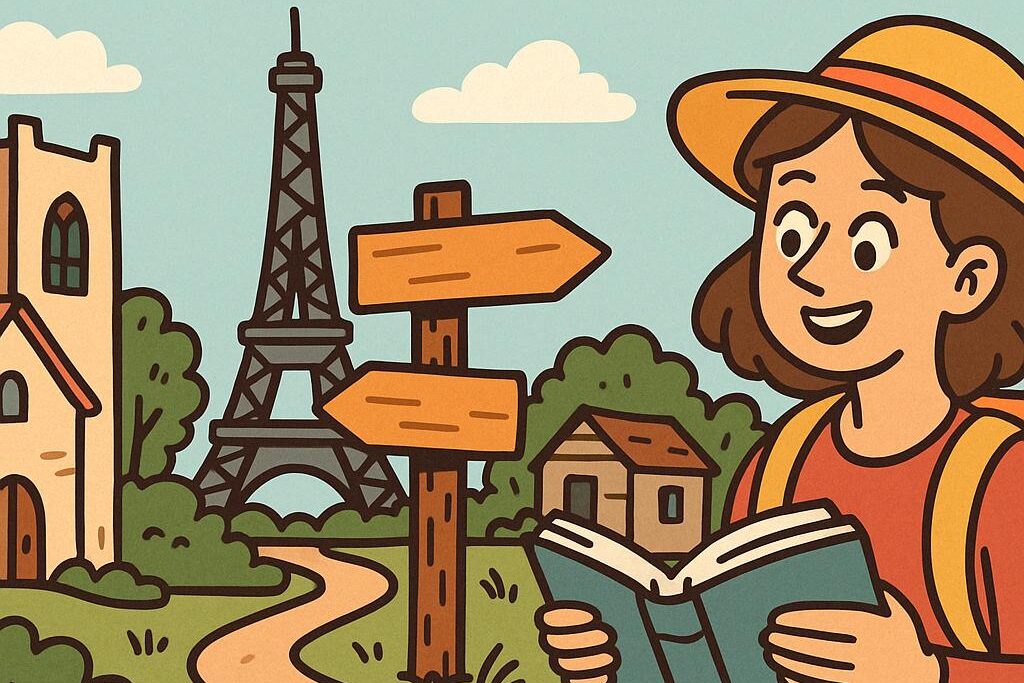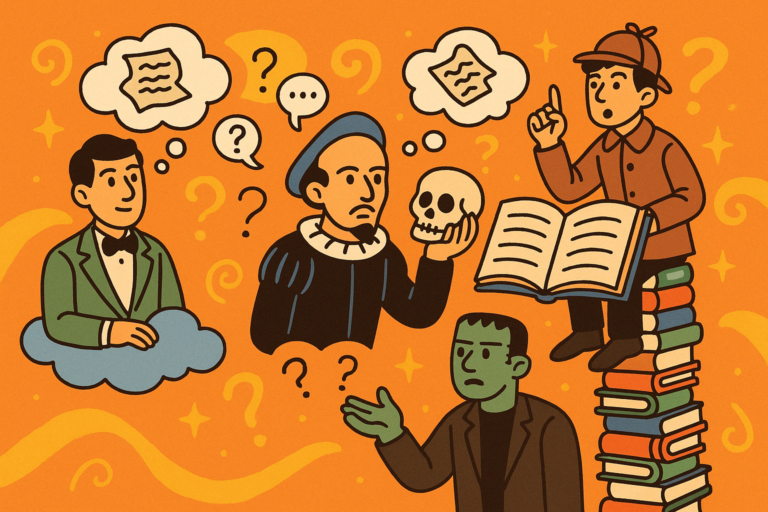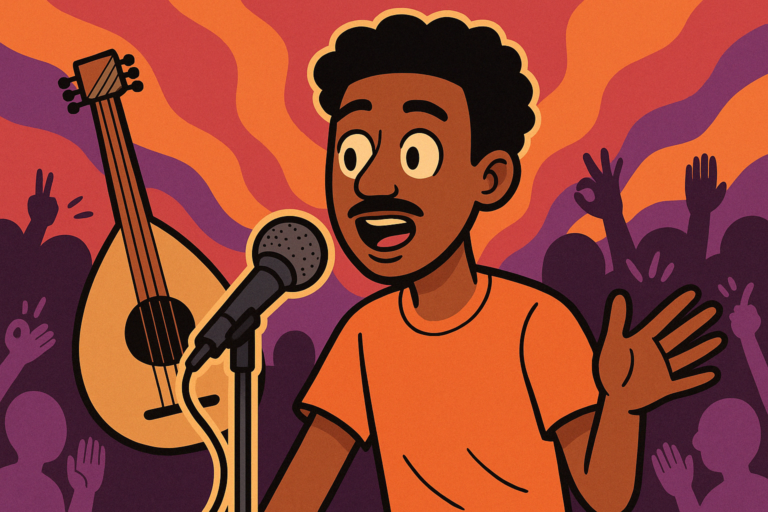How Real-World Settings Deepen the Reader’s Connection to Fiction

Literary pilgrimages aren’t just about seeing where a book was set—they’re about re-reading the text through space itself. I always thought it was mostly emotional or symbolic, but there’s a deeper layer here.
Experts have been looking at this through geocriticism, which basically treats geography like a lens for interpretation. Think about Ulysses—standing in Dublin, retracing Bloom’s steps, you start to feel time sync up with narrative in a way that’s honestly hard to describe.
Or take the Brontë moors: the physical bleakness out there adds a whole new kind of gothic weight to Wuthering Heights.
What I’ve found is that the more people embed themselves in these real spaces, the more they reshape their reading. It’s not just travel—it’s interpretive immersion, and it’s changing how some people engage with fiction completely.
How Geography Influences Literary Interpretation
Here’s where things start getting really interesting: when we think of reading as a mental act, we often forget how spatially grounded it can be. But once I started digging into ideas like geocriticism and literary cartography, I realized just how much place shapes interpretation—especially when you’re physically in that place.
Geocriticism, a term pushed forward by Bertrand Westphal, treats geography as more than just background—it’s a textual force. It invites us to read literature through space, not just within it.
Literary cartography, meanwhile, is all about mapping fictional worlds onto real ones (and vice versa).
It explores how locations structure narrative meaning. So when you visit a literary site, you’re not just walking in a character’s shoes—you’re also re-mapping the story’s logic in real time.
Let’s break that down with a few key ways geography impacts interpretation:
1. Landscape as Character
In some novels, the landscape doesn’t just host the story—it acts within it.
- The Yorkshire Moors in Wuthering Heights aren’t just a setting—they’re an emotional register. The moors reflect and amplify the characters’ inner chaos. When you stand out there yourself—isolated, windswept, a little unnerved—you start to feel the narrative’s instability in your body. The sublime isn’t theoretical anymore; it’s visceral.
- You realize Heathcliff doesn’t just belong to a gothic trope—he’s a product of this specific natural violence. It deepens your understanding of his unpredictability, his elemental rage.
2. Architecture as Metaphor
Built environments also encode narrative meaning.
- In novels like Mrs. Dalloway or The Hours, homes and city streets are more than practical paths—they represent inner lives. Virginia Woolf’s London is both public and incredibly intimate. Walking those same streets, especially if you’re thinking with Woolf’s stream-of-consciousness lens, you start seeing how architecture becomes memory—every building layered with personal resonance.
- The idea here is that physical structures can mirror or resist emotional architecture. So a character’s home, a city’s layout, or a hidden alley becomes symbolic—and spatially experienced by readers on-site.
3. Temporal Framing Through Space
Being in a place also distorts or reframes your sense of time in a text.
- Think about Dublin in Ulysses. Joyce mapped the entire city down to the brick, compressing a single day into sprawling narrative space. Visiting Dublin and tracing Bloom’s path makes time feel stretchy, elastic. You start to sync your physical movement with narrative time. Suddenly, you’re experiencing literary temporality—not just reading about it.
- This is where theory meets embodiment: chronotopes (Bakhtin fans, you’re nodding right now) become actual lived experiences.
4. Emotional Layering and Interpretive Depth
The more immersive the geography, the more emotionally layered the reading becomes.
- Reading The Waves by Virginia Woolf while sitting by the English seaside? You’ll feel its rhythm differently. The ebb and flow of the prose syncs up with the tide around you. That real-time sensory feedback makes the novel’s fragmentation more tangible.
- Even in more modern texts—like Knausgård’s My Struggle—visiting the mundane streets of Bergen adds weight to his existential pondering. When you’re there, the banality becomes textured; it forces a reevaluation of what’s “literary.”
How Visiting Places Adds Texture to the Reading
There’s something deeply fascinating about the moment a fictional place stops feeling abstract and starts feeling… lived. This is where literary pilgrimages shift from passive appreciation to active interpretation. You’re no longer just reading the novel—you’re inhabiting it. And that changes everything.
During my research, I kept coming across accounts from seasoned readers, scholars, and even authors who talked about the “afterimage” effect—how visiting a literary site didn’t just echo what they’d read but reshaped it. These experiences weren’t just emotionally powerful—they altered the cognitive and critical frameworks people used to engage with the text. And the reason why? It comes down to experiential layering.
When you’re in a place, you’re layering physical, sensory, and emotional data onto the narrative you know. You start reading differently—not just because of what you see, but because of what your body feels, what your senses notice, and what your mind connects in real time.
Let’s break that down into some of the key interpretive layers that real-world experience adds to literary texts:
1. Embodied Atmosphere
One of the most immediate changes that happens when visiting a literary site is that the mood of the book becomes bodily.
- You might read about the fog in Dickens’ Bleak House and understand it metaphorically—confusion, bureaucracy, moral haze. But walk through an actual London morning in thick mist, and suddenly that metaphor is sitting on your skin, not just in your head.
- In the Yorkshire moors, the cold, damp wind adds bite to Wuthering Heights. It’s not just a dramatic backdrop—it’s an active emotional pressure. Being in the same climate as the characters lets you feel what they feel, sometimes even before you consciously recognize it in the text.
This kind of sensory grounding makes atmosphere not just readable but experiential—which can reshape tone, pacing, and emotional stakes.
2. Contextual Anchoring
Physical places come with histories—local, political, personal—that aren’t always in the book, but inform it in powerful ways.
- Visiting Faulkner’s Mississippi makes you realize how deeply the racial and historical tensions of the American South bleed through every sentence of his work. You might know this intellectually, but standing in Oxford, seeing the class dynamics, and talking to locals about their town’s legacy? It hits different. Suddenly, Absalom, Absalom! feels less like a dense family saga and more like a multi-generational reckoning that’s still ongoing.
- Similarly, when you explore Orwell’s Barcelona from Homage to Catalonia, it gives the book a new texture. You might notice where bullet holes still linger on buildings. You grasp how close the frontlines were. The spatial compression of the war makes Orwell’s fractured political loyalties feel even more claustrophobic and urgent.
By rooting the novel in real socio-political terrain, you’re no longer analyzing text in a vacuum—you’re in dialogue with history itself.
3. Textual Re-mapping
Another layer that shifts during literary travel is your internal mental map of the novel. Every book creates its own geography in your head—often abstracted, distorted, or incomplete. But when you visit the real locations, you start correcting (or complicating) that map.
- With Ulysses, for example, most readers carry a vague sense of Dublin in their imagination. But when you actually follow Bloom’s route—yes, there are walking tours for this—you start to grasp how the novel’s structure is mapped to the city’s arteries. You realize the novel isn’t just stream-of-consciousness; it’s urban choreography. Every turn, every street name, is doing spatial work. And suddenly, you’re not just reading about Dublin—you’re inside the machinery of the novel.
- Even fictional places based on real locations, like Middlemarch (loosely modeled on Coventry), gain new shape when you walk the streets Eliot likely had in mind. The physical spacing between town, manor, and farm shifts your perception of class barriers, gossip networks, and political tension.
Re-mapping allows you to read space as narrative, not just setting.
4. Temporal Distortion and Layering
This is probably the most surreal part of literary pilgrimage: the way time starts behaving differently.
Standing in a literary location, you often feel a strange coexistence of timelines—yours, the author’s, the characters’. It’s a kind of mental palimpsest. The present overlays the past, and the fictional overlays the real. It’s weird. And powerful.
- In Bath, England, when reading Austen’s Persuasion, you’ll likely walk past modern shops and tourists—then suddenly notice a Georgian façade and think, “That could’ve been Anne Elliot’s view.” You start flickering between centuries. The present becomes textured with literary memory.
- This effect is even stronger in places like Kafka’s Prague or Murakami’s Tokyo. You can feel the characters haunting the real streets—not as ghosts, but as historical overlays. They add narrative friction to your movement through space.
This kind of temporal layering makes the novel feel unfinished, still happening. It turns the act of reading into something strangely cinematic—like you’re watching parallel timelines blur into each other.
5. Intimate Alienation
And finally, perhaps the most unexpected but important interpretive layer: disillusionment.
Sometimes visiting a literary site shows you just how wrong your imagination was. The place is smaller, louder, more commercial, or just totally different than the vibe the book gave you. And this, too, can deepen your reading.
- When I visited Dublin for Ulysses, I was surprised at how ordinary some of it felt. A few landmarks were hyped; others were invisible. And that dissonance forced me to re-engage with the novel as a construction. Joyce didn’t just document Dublin—he recreated it, warped it, made it mythic.
- Or take The Great Gatsby. Visiting Long Island’s “West Egg” equivalents, you might realize there’s no perfect analog. The illusion of grandeur collapses a bit. But that’s the point. Fitzgerald wasn’t writing realism—he was writing longing. And confronting that gap between text and place makes the theme of unattainability hit harder.
This feeling—what I’ve come to think of as “intimate alienation”—isn’t a letdown. It’s a critical lens. It reminds us that fiction transforms the real, and that our imaginations do too.
Why This Matters
So why go through all this?
Why leave the comfort of your armchair for a rainy walk across some muddy moor or a crowded urban street?
Because every sensory layer you add—every smell, sound, footstep, or historic insight—reshapes your reading practice. The novel doesn’t change, but you do. You begin to read with your whole body, not just your brain.
And for those of us who live and breathe literature, that shift—from passive consumption to embodied interpretation—is nothing short of transformative.
Selected Pilgrimage Destinations and Their Literary Impacts
Once you’ve bought into the idea that literary pilgrimages are more than just aesthetic indulgence—that they can actually reframe the way we read—then the question becomes: Where should you go? Which literary sites offer not just a great selfie backdrop but a serious shift in interpretive depth?
So I pulled together a few destinations that came up repeatedly in my research and conversations. These aren’t just famous—they’re transformative, especially when you go with a reader’s eye and a critic’s curiosity. And each of them reveals something unique about how fiction and geography interact.
1. Haworth, England – Brontë Country
Text: Wuthering Heights by Emily Brontë, Jane Eyre by Charlotte Brontë
Impact: Reshapes your sense of landscape as emotionally active.
You don’t visit Haworth so much as get swallowed by it. The wildness of the Yorkshire moors is still very much intact—raw, windy, untamed. And walking through that landscape, especially alone or off-season, does something strange to you: it shifts your emotional register.
In Wuthering Heights, the moors aren’t just setting—they’re expression. They externalize inner states of grief, obsession, and rage. Standing there, it’s easier to understand how nature functions almost like a psychic amplifier in the novel.
Plus, the physical separation between the village and the parsonage where the Brontës lived makes their intellectual isolation feel real. You don’t just learn about their context—you feel the tension between interiority and exposure that shapes all their work.
2. Paris, France – Hemingway’s Expat Circles
Text: A Moveable Feast by Ernest Hemingway, plus The Sun Also Rises, and more
Impact: Challenges the myth of the “golden literary past.”
Paris is one of those cities that practically markets itself as a literary destination. But here’s the twist: when you visit it with Hemingway in mind, especially through the lens of A Moveable Feast, you start noticing just how much of the book is about illusion.
The cafés, boulevards, and bohemian quarters still exist—but they’re now curated for tourism. You’re forced to confront how nostalgia gets edited into elegance. And that makes Hemingway’s deceptively simple prose feel more calculated, more stylized than you might’ve thought.
Reading The Sun Also Rises in the 5th arrondissement, you get a new appreciation for how lost the “Lost Generation” really was. It’s not just the post-war trauma—it’s the spatial dislocation, the feeling of never being entirely of a place. Paris becomes a stage for emotional ambiguity.
3. Concord, Massachusetts – Transcendentalist Ground Zero
Text: Walden by Henry David Thoreau, Nature by Ralph Waldo Emerson
Impact: Re-contextualizes ideas of solitude, self, and ecology.
Visiting Walden Pond is honestly a little surreal. You expect total wilderness, but it’s more of a public park now—people jog, swim, hang out with iced coffees. But then you wander off-path, find the site of Thoreau’s cabin, and suddenly you’re in a different headspace.
You start to realize that what Thoreau was doing wasn’t some grand escapist fantasy—it was a controlled experiment in how minimalism, time, and space shape the self. And physically walking those woods, you begin to feel the texture of that experiment: the scale of his world, the proximity to town, the seasons shaping his writing rhythm.
What hits hardest is how small his world was—and how expansive his thought became. That contradiction becomes crystal clear when you’re standing in it. His work shifts from being “philosophical nature writing” to something closer to applied metaphysics.
4. Copenhagen, Denmark – Kierkegaard’s Existential Terrain
Text: Either/Or, Fear and Trembling, and other works by Søren Kierkegaard
Impact: Turns philosophy into a geographical practice.
Okay, this one’s for the hardcore literary-philosophy folks, but stick with me. Kierkegaard lived his entire life in Copenhagen, and he walked the city compulsively. His “authorship,” as he called it, is scattered across parks, churches, narrow streets—and he often built his arguments as if the city itself was a character.
There are now maps tracing his walking routes. And following them is wild—it’s like physical footnotes to his work. Suddenly, the split between the aesthetic and the ethical in Either/Or isn’t just theoretical. It’s spatial. You’re moving between neighborhoods of thought, and each stop reveals a different layer of his inner life.
You realize Kierkegaard’s constant walking wasn’t just a quirk—it was method. A thinking-in-motion that reconfigures the way we understand solitude, dread, and inwardness.
5. Tokyo, Japan – Murakami’s Dream Geography
Text: Norwegian Wood, Kafka on the Shore, 1Q84, etc.
Impact: Makes the unreal feel more real—and vice versa.
Murakami’s Tokyo isn’t always named outright, but its contours are unmistakable: suburban quiet, anonymous cafés, side streets that lead somewhere strange. And walking through modern Tokyo, especially with one of his books in hand, is a bit like trying to trace a dream after you wake up. You’re not sure what’s real, but something feels off, in a deliberate way.
In Shinjuku or Koenji, you’ll stumble on things that feel too Murakami-esque to be accidental: a jazz bar with no signage, a library hidden behind an apartment block, a train station with nobody in it at noon. This subtle surrealism, which feels stylized on the page, becomes eerie in person.
It shifts your understanding of his fiction. You realize he’s not writing fantasy—he’s capturing a psychological landscape that already exists. Tokyo becomes a kind of liminal zone, and once you’ve been there, you can never read Murakami the same way again.
Bonus: Pilgrimages That Disrupt Expectations
Here are a few quick mentions where the disappointment or dissonance actually deepens the read:
- The American South (Flannery O’Connor, William Faulkner): Often less gothic, more banal—forces you to see how fiction transforms cultural texture into allegory.
- Monet’s Giverny vs. Proust’s Paris: Giverny is lush and postcard-perfect, but In Search of Lost Time feels claustrophobically internal. Seeing one makes you reframe the other.
- Salinas, California – Steinbeck Country: Smaller and more industrial than many imagine—shifts readings of East of Eden away from myth and into something more raw, rooted, and local.
Final Thoughts
These aren’t tourist spots—they’re interpretive laboratories.
Each site gives you a new tool for understanding the book: a spatial metaphor, a sensory cue, a historical context, or a disruption of expectation. They change your relationship to the text not by telling you what to think—but by pulling you into the same world the author was navigating, emotionally and physically.
Literary pilgrimages aren’t about recreating the past—they’re about collapsing the space between fiction and reality, between imagination and location.
And if you’re willing to walk through a book instead of just reading it, you might find that its meaning isn’t fixed—but still very much alive.





